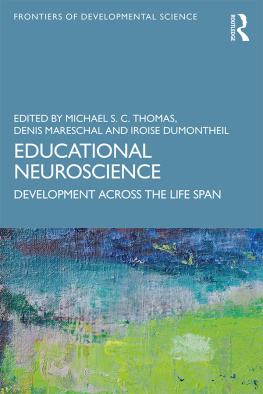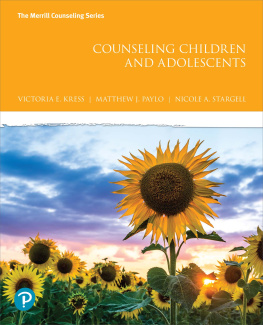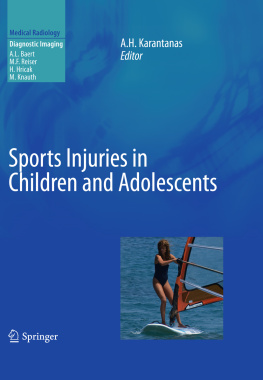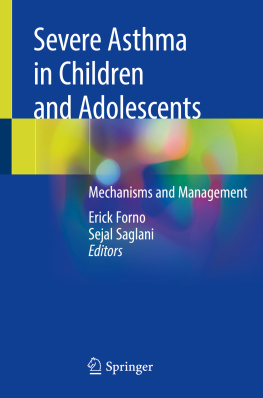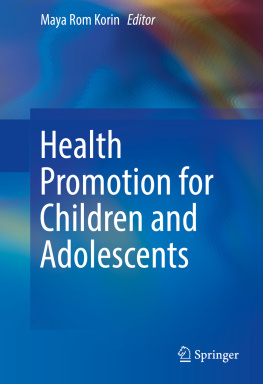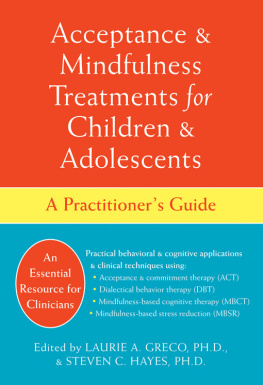Thomas A. Field - Neuroscience-Informed Counseling with Children and Adolescents
Here you can read online Thomas A. Field - Neuroscience-Informed Counseling with Children and Adolescents full text of the book (entire story) in english for free. Download pdf and epub, get meaning, cover and reviews about this ebook. year: 2020, genre: Home and family. Description of the work, (preface) as well as reviews are available. Best literature library LitArk.com created for fans of good reading and offers a wide selection of genres:
Romance novel
Science fiction
Adventure
Detective
Science
History
Home and family
Prose
Art
Politics
Computer
Non-fiction
Religion
Business
Children
Humor
Choose a favorite category and find really read worthwhile books. Enjoy immersion in the world of imagination, feel the emotions of the characters or learn something new for yourself, make an fascinating discovery.

- Book:Neuroscience-Informed Counseling with Children and Adolescents
- Author:
- Genre:
- Year:2020
- Rating:3 / 5
- Favourites:Add to favourites
- Your mark:
- 60
- 1
- 2
- 3
- 4
- 5
Neuroscience-Informed Counseling with Children and Adolescents: summary, description and annotation
We offer to read an annotation, description, summary or preface (depends on what the author of the book "Neuroscience-Informed Counseling with Children and Adolescents" wrote himself). If you haven't found the necessary information about the book — write in the comments, we will try to find it.
Neuroscience-Informed Counseling with Children and Adolescents — read online for free the complete book (whole text) full work
Below is the text of the book, divided by pages. System saving the place of the last page read, allows you to conveniently read the book "Neuroscience-Informed Counseling with Children and Adolescents" online for free, without having to search again every time where you left off. Put a bookmark, and you can go to the page where you finished reading at any time.
Font size:
Interval:
Bookmark:
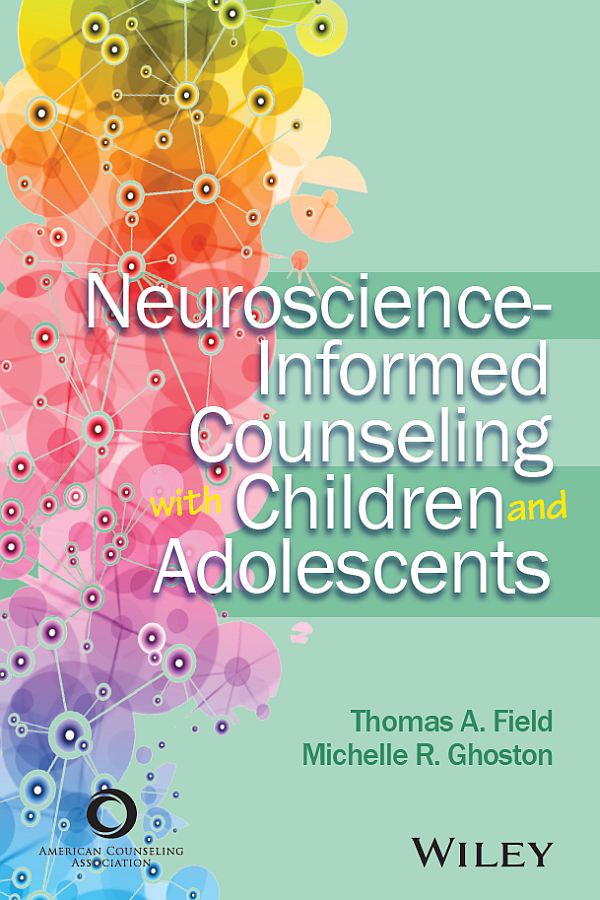
- Chapter 2
- Chapter 6
- Chapter 2
- Chapter 3
- Chapter 4
- Chapter 5
- Chapter 6
- Chapter 8
- Chapter 11
Thomas A. Field
Michelle R. Ghoston

6101 Stevenson Avenue, Suite 600
Alexandria, VA 22304
www.counseling.org
Copyright 2020 by the American Counseling Association. All rights reserved. Printed in the United States of America. Except as permitted under the United States Copyright Act of 1976, no part of this publication may be reproduced or distributed in any form or by any means, or stored in a database or retrieval system, without the written permission of the publisher.
American Counseling Association
6101 Stevenson Avenue, Suite 600 Alexandria, VA 22304
Associate Publisher Carolyn C. Baker
Digital and Print Development Editor Nancy Driver
Senior Production Manager Bonny E. Gaston
Copy Editor Beth Ciha
Cover and text design by Bonny E. Gaston
Library of Congress Cataloging-in-Publication Data
Names: Field, Thomas A., author. | Ghoston, Michelle R., author.
Title: Neuroscience-informed counseling with children and adolescents / Thomas A. Field and Michelle R. Ghoston.
Description: Alexandria : American Counseling Association, 2020. | Includes bibliographical references and index.
Identifiers: LCCN 2019053760 | ISBN 9781556203862 (paperback)
Subjects: LCSH: ChildrenCounseling of. | YouthCounseling of. | Neurosciences.
Classification: LCC BF636.6 F54 2020 | DDC 158.3083dc23
LC record available at https://lccn.loc.gov/2019053760
This text is dedicated to our shared mentor, Professor Steve Nielsen.
Many years ago, both of us attended the masters-level counseling program at Lynchburg College (now the University of Lynchburg). We were in cohorts a few years apart. Steve served as our mentor throughout our masters program, during our doctoral studies, and beyond. Well known to the Virginia counseling community, Steve is well respected for his intelligence, humor, and commitment to serving the community. Both of us learned from Steve the importance of being involved professionally, remaining curious, and constantly seeking to improve as counselors. We hope to embody the warmth, professional commitment, and seemingly boundless wisdom that Steve epitomized. Although Steve did not contribute to this book formally, his spirit is felt throughout.
We wrote this text with the intention of appealing broadly to new counselors and experienced practitioners. We also intended for this text to be useful to counselors in a variety of settings, such as schools, hospitals and residential facilities, and outpatient clinics. We cover general principles for counseling children and adolescents before moving into more technical information about neurophysiological development across childhood and adolescence and in-depth information about counseling approaches for different developmental stages. We divide the chapters into three sections. The first section provides a background of neuroanatomy and physiology. The second section focuses on neurophysiological development during childhood and relevant counseling approaches. The third section focuses on counseling adolescents. The concluding chapter explores the delivery of neuroscience education to clients utilizing information that is introduced throughout the text. Our intent for each chapter is to present a neuroscience-informed approach to counseling children and adolescents, and thus we often draw from neuroscience findings when presenting information about child and adolescent development and counseling approaches at different developmental stages.
We recognize that terms such as childhood and adolescence are difficult to define with regard to age, as children may mature earlier or later than others (e.g., secondary sex development). For the sake of clarity, we loosely define childhood as ages 0 to 11 and adolescence as ages 12 to 18. These are loose definitions, as experts such as Adriana Galvn estimate that the range for pubertal onset is 9 to 16 years. We also recognize that adolescence often ends beyond age 18. We have decided not to differentiate middle childhood (i.e., preadolescence) from late childhood in this text because we see clearer distinctions between early childhood (011) and adolescence (1218) when providing counseling. For example, we have led insight-oriented groups with adolescents in which 12 or 13 is the cutoff age for inclusion. We have also successfully used insight-oriented approaches such as cognitive behavior therapy with youth ages 12 and older and have observed that play therapy is less useful with youth after approximately 10 years of age.
Each chapter includes several text features that we hope will help you to better comprehend the content. Key concepts and aligned Council for Accreditation of Counseling and Related Educational Programs standards are identified at the beginning of the chapter to assist you in understanding the content and learning objectives of each chapter. Quiz questions are provided at the end of each chapter so you can test your knowledge of key concepts explored in each chapter. Reflection questions are embedded at different points in the chapter to prompt your own deep reflection on and processing of the content. Case vignettes are used throughout the text to demonstrate how to apply concepts to counseling work. Finally, we have included a comprehensive neuroscience glossary at the back of the textbook for you to review when you come across unfamiliar terminology.
We use pseudonyms for all of the cases in this text, and we sought to intentionally mask identifying information to preserve the identities of former clients. Often we merge the narratives of several former clients into one composite case. Although we have blinded the identities of the children, adolescents, and families we have previously helped, the specific details of the case information are mostly factually accurate. Most case vignettes are brief, although two cases (those of Brooke and Wayne) are more extended and are explored across several chapters. We wanted to use these elaborated cases to describe an in-depth application of key concepts to case conceptualization and treatment planning.
The counseling field is increasingly applying neuroscience to counseling practice and is increasingly in need of training opportunities for learning how to integrate complex information into work with clients. A large concern of ours is overreliance on applied models. These are treated as primary sources by some professionals, yet they are in fact interpretations of basic neuroscience anatomy and physiology. We felt that if we summarized these applied models to counseling practice, we ran the risk of summarizing existing summarizations of neuroscience, which would have led us even further away from the primary source material of neural anatomy and physiology. Thus, you might be surprised to find that we rarely cite commonly known authors such as Daniel Siegel, Louis Cozolino, Allen Schore, and Stephen Porges in the text. We took seriously our charge of using primary sources (i.e., actual neuroscience studies) to provide accurate information about neuroscience and refrained from relying on applied models. We hope this text will increase your knowledge of basic neuroanatomy and physiology, which we believe is fundamental to applying neuroscience in your work.
Next pageFont size:
Interval:
Bookmark:
Similar books «Neuroscience-Informed Counseling with Children and Adolescents»
Look at similar books to Neuroscience-Informed Counseling with Children and Adolescents. We have selected literature similar in name and meaning in the hope of providing readers with more options to find new, interesting, not yet read works.
Discussion, reviews of the book Neuroscience-Informed Counseling with Children and Adolescents and just readers' own opinions. Leave your comments, write what you think about the work, its meaning or the main characters. Specify what exactly you liked and what you didn't like, and why you think so.

